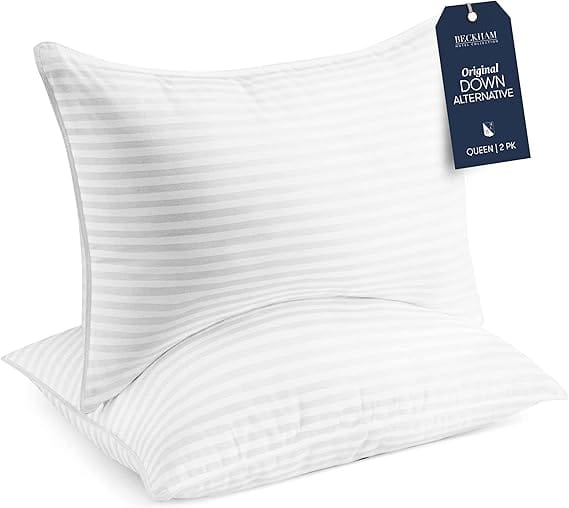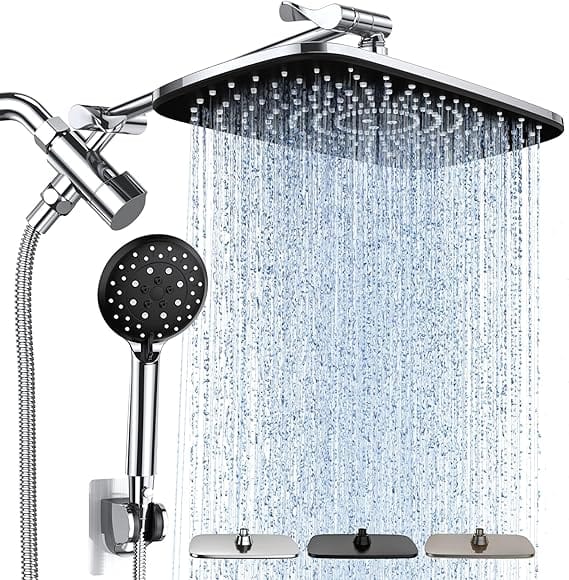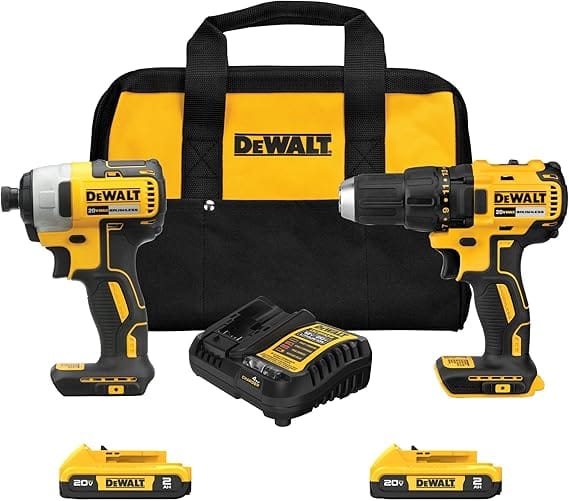Home Essentials: The Ultimate Guide
Creating a comfortable and functional living space is essential for enhancing your overall well-being. Whether you are moving into a new house, upgrading your current home, or simply looking for inspiration, this comprehensive guide to home essentials will provide you with the knowledge and ideas to make your home both practical and inviting. From furniture and appliances to decorative touches and maintenance tools, this guide covers everything you need to know about curating a space that reflects your personality and meets your daily needs.
1. The Basics of Home Essentials
Home essentials are the foundational items that make a house livable. They include functional furniture, reliable appliances, kitchenware, and maintenance tools. The right mix of these elements ensures your home is a sanctuary that caters to comfort, functionality, and aesthetics.
Buy from Amazon > Bed Pillows Standard / Queen Size Set of 2 – Down Alternative Bedding Gel Cooling Pillow for Back

Key Categories of Home Essentials
- Furniture: Sofas, beds, dining tables, chairs, and storage units.
- Appliances: Refrigerators, washing machines, ovens, and smaller devices like microwaves and blenders.
- Kitchenware: Cookware, utensils, plates, bowls, and glassware.
- Linens and Bedding: Bed sheets, comforters, towels, and throw blankets.
- Lighting: Overhead lighting, lamps, and task lights.
- Decor: Wall art, rugs, curtains, and plants.
- Maintenance and Cleaning Tools: Brooms, vacuums, toolkits, and cleaning supplies.
Buy from Amazon > High Pressure Rain Shower Head Combo with Extension Arm- Wide Showerhead with Handheld Water Spray

2. Choosing the Right Furniture
Furniture serves as the backbone of your home’s design and functionality. Prioritize durability, comfort, and style when making your selections.
Living Room Essentials
- Sofa or Sectional: A comfortable sofa is a centerpiece for relaxation and socializing.
- Coffee Table: Choose a design that complements your sofa and provides ample surface area.
- TV Stand or Media Console: Keep electronics organized and tidy.
- Bookshelves or Storage Units: Display books, decorations, or store miscellaneous items.
Buy from Amazon > DEWALT 20V MAX Cordless Drill, Impact Driver, 2-Tool Power Tool Combo Kit, Brushless Power Tool Set with 2 Batteries and Charger Included

Bedroom Must-Haves
- Bed Frame and Mattress: Invest in a quality mattress for restful sleep.
- Nightstands: Convenient storage for bedtime essentials like lamps and books.
- Dresser or Wardrobe: Organize clothing efficiently.
Dining Room and Kitchen Furniture
- Dining Table and Chairs: Select a size and style suitable for your family or entertaining needs.
- Bar Stools: Perfect for kitchen islands or breakfast bars.
- Cabinets and Shelving: Ensure ample storage for kitchenware and pantry items.
3. Equipping Your Kitchen
The kitchen is often considered the heart of the home. Equipping it with the right tools makes cooking and meal preparation a breeze.
Essential Kitchen Appliances
- Refrigerator: Opt for an energy-efficient model with sufficient capacity.
- Stove and Oven: Choose between gas, electric, or induction models based on your cooking preferences.
- Microwave: Ideal for quick heating and meal prep.
- Dishwasher: Saves time and effort in cleaning.
- Small Appliances: Coffee makers, blenders, toasters, and air fryers enhance convenience.
Must-Have Kitchenware
- Cookware: Invest in a versatile set of pots and pans.
- Utensils: Keep a selection of spatulas, tongs, whisks, and measuring cups.
- Cutlery: High-quality knives and cutting boards are indispensable.
- Serving Dishes: Stock up on plates, bowls, and serving trays for meals and gatherings.
- Storage Solutions: Airtight containers and shelving systems keep ingredients organized and fresh.
4. Creating a Comfortable Bedroom
Your bedroom should be a tranquil retreat where you can unwind and recharge. Focus on comfort, functionality, and personalization.
Bedding Essentials
- Mattress: Select a mattress that supports your preferred sleep position.
- Pillows: Choose pillows that suit your sleeping habits and provide proper neck support.
- Sheets and Comforters: Opt for soft, breathable materials like cotton or bamboo.
Organizational Tools
- Closet Systems: Maximize storage with shelves, rods, and drawers.
- Under-Bed Storage: Utilize bins or drawers to store seasonal items or extra bedding.
- Decorative Touches: Add personal flair with wall art, throw pillows, and rugs.
5. The Importance of Lighting
Lighting can transform the ambiance of your home. Layer different types of lighting to achieve the desired effect.
Types of Lighting
- Ambient Lighting: Overhead fixtures provide general illumination.
- Task Lighting: Desk lamps, under-cabinet lights, and reading lights focus on specific areas.
- Accent Lighting: Highlight art or architectural features with spotlights or string lights.
Tips for Optimal Lighting
- Use dimmers to adjust brightness levels.
- Choose LED bulbs for energy efficiency.
- Incorporate natural light with strategically placed windows and mirrors.
6. Adding Decorative Touches
Decor plays a crucial role in setting the tone of your home. It reflects your personality and makes the space feel complete.
Key Decorative Items
- Wall Art: Hang paintings, photographs, or prints to add character.
- Rugs: Define spaces and add warmth with area rugs.
- Plants: Incorporate greenery for a fresh and lively atmosphere.
- Throw Blankets and Pillows: Add texture and color to your furniture.
Styling Tips
- Stick to a cohesive color palette.
- Mix textures and materials for visual interest.
- Rotate decor seasonally to keep your home feeling fresh.
7. Maintaining Your Home
A well-maintained home is a happy home. Keeping your living space clean and functional requires the right tools and routines.
Cleaning Supplies
- Vacuum Cleaner: Choose one with attachments for various surfaces.
- Mops and Brooms: Keep floors spotless with quality tools.
- All-Purpose Cleaners: Use versatile products for multiple surfaces.
- Laundry Essentials: Stock detergent, fabric softener, and a hamper.
Toolkits
- Basic Tools: Hammers, screwdrivers, wrenches, and pliers are essential.
- Power Tools: A cordless drill and saw can handle advanced projects.
- Ladders and Step Stools: Reach high places safely.
Home Maintenance Tips
- Conduct regular inspections for plumbing and electrical systems.
- Replace air filters and smoke detector batteries periodically.
- Keep gutters and outdoor spaces clean and clear.
8. Budget-Friendly Tips
Outfitting your home doesn’t have to break the bank. With strategic planning, you can save money while still creating a stylish and functional space.
Shopping Strategies
- Compare prices online and in-store.
- Look for sales, discounts, and coupons.
- Invest in multi-functional furniture.
DIY Projects
- Repurpose old furniture with a fresh coat of paint or new hardware.
- Create custom decor like photo collages or handmade curtains.
Prioritization
- Focus on essential items first and build your collection over time.
- Invest in high-quality items for long-term use.
9. Sustainable Home Essentials
Sustainability is an increasingly important factor when selecting home essentials. Choose eco-friendly options to reduce your environmental impact.
Green Choices
- Energy-Efficient Appliances: Look for Energy Star ratings.
- Sustainable Materials: Opt for furniture made from reclaimed wood or bamboo.
- Reusable Products: Swap disposable items for reusable alternatives, like cloth napkins and glass containers.
- Smart Home Devices: Automate lighting and temperature to conserve energy.
Waste Reduction Tips
- Donate or recycle items you no longer need.
- Compost food waste to enrich your garden soil.
10. Personalizing Your Space
Your home should reflect your unique tastes and lifestyle. Infuse personality into every room to create a space that feels truly yours.
Ideas for Personalization
- Display mementos or souvenirs from travels.
- Create a gallery wall with family photos.
- Incorporate your favorite colors into decor and textiles.
- Design a hobby corner for crafting, reading, or music.
Flexible Spaces
- Transform spare rooms into multi-functional areas, such as guest rooms with a workspace.
- Use modular furniture to adapt to changing needs.
Home Ideas Design: Transforming Spaces into Stylish Sanctuaries
Creating a home that reflects personal taste, comfort, and functionality is a dream for many. Home design ideas encompass a vast range of styles, layouts, and decor trends that cater to different lifestyles and preferences. Whether you’re revamping a small apartment, designing your dream house, or simply refreshing a room, there are countless ways to make your space truly yours. This comprehensive guide explores various aspects of home design, offering inspiration and practical tips to help you create a stunning living environment.
1. Understanding Your Style
Before diving into any home design project, it’s essential to identify your personal style. Some popular home design styles include:
- Modern: Clean lines, neutral colors, and minimalism define modern design. Think sleek furniture, open spaces, and a clutter-free environment.
- Traditional: Rich wood finishes, intricate patterns, and classic furnishings create a warm and timeless ambiance.
- Industrial: Exposed brick walls, metal fixtures, and raw, unfinished materials give an edgy, urban feel.
- Bohemian: A mix of patterns, vibrant colors, and eclectic decor pieces bring a free-spirited, artistic vibe.
- Scandinavian: Light wood tones, simple decor, and functionality dominate this design style, focusing on hygge (coziness).
By identifying what resonates with you, you can ensure consistency and harmony throughout your home.
2. Maximizing Space in Small Homes
Small spaces require creative solutions to ensure functionality and aesthetic appeal. Here are some tips for making the most of limited square footage:
- Multi-functional furniture: Opt for pieces like sofa beds, foldable tables, and storage ottomans.
- Vertical storage: Use wall-mounted shelves, tall bookcases, and over-the-door organizers to save floor space.
- Light colors: Light hues make rooms feel larger and more open.
- Mirrors: Strategically placed mirrors can create the illusion of more space by reflecting light.
- Declutter: Adopt a minimalist approach to decor and eliminate unnecessary items to keep the area open and airy.
3. Living Room Ideas
The living room is often the heart of the home—a space for relaxation and entertaining. To make it inviting and functional:
- Choose a focal point: Whether it’s a fireplace, a large window with a view, or a bold piece of art, design your layout around it.
- Layer lighting: Combine ambient, task, and accent lighting to set the mood and ensure practicality.
- Mix textures: Incorporate a variety of materials like velvet cushions, a leather sofa, and a woven rug to add depth and interest.
- Personalize: Showcase your personality with family photos, travel souvenirs, or unique art pieces.
4. Kitchen Design Tips
The kitchen is not only a functional space but also a hub for family and social gatherings. Modern kitchen design prioritizes both aesthetics and efficiency:
- Work triangle: Arrange the sink, stove, and refrigerator in a triangular layout for optimal workflow.
- Storage solutions: Use pull-out pantry shelves, under-cabinet drawers, and magnetic spice racks to maximize storage.
- Lighting: Combine under-cabinet lights, pendant lamps, and recessed lighting for a well-lit workspace.
- Color schemes: Neutral palettes with pops of color or bold, monochromatic designs are trending.
- Smart appliances: Incorporate smart fridges, ovens, and other appliances for a tech-savvy kitchen.
5. Bedroom Sanctuary
A bedroom should be a sanctuary that promotes rest and relaxation. Here’s how to create a cozy yet stylish retreat:
- Choose calming colors: Soft blues, greens, and neutrals create a tranquil atmosphere.
- Invest in quality bedding: High-thread-count sheets, fluffy pillows, and a comfortable mattress make all the difference.
- Lighting: Include bedside lamps with dimmers for reading and soft lighting.
- Storage: Use under-bed storage, built-in wardrobes, or decorative baskets to keep clutter at bay.
- Decor: Add personal touches with artwork, plants, or a statement headboard.
6. Bathroom Oasis
Transform your bathroom into a spa-like retreat with these design ideas:
- Neutral tones: Soft grays, whites, and beiges create a serene environment.
- Luxurious fixtures: Invest in a rain shower, a freestanding tub, or a backlit mirror.
- Storage: Wall-mounted vanities, open shelves, and medicine cabinets help maintain a tidy space.
- Textures: Use natural materials like stone, wood, or bamboo to add warmth and elegance.
- Greenery: Add moisture-loving plants like ferns or orchids for a touch of nature.
7. Home Office Inspiration
With remote work becoming more prevalent, a functional and inspiring home office is a must:
- Location: Choose a quiet area with natural light.
- Ergonomic furniture: Invest in a comfortable chair and an adjustable desk.
- Organization: Use filing cabinets, wall organizers, and desk trays to keep everything in order.
- Decor: Incorporate motivational quotes, artwork, or plants to boost productivity.
- Technology: Ensure you have the necessary tech setup, including high-speed internet, a good monitor, and noise-canceling headphones.
8. Outdoor Living Spaces
Extend your living area by designing a functional and beautiful outdoor space:
- Seating: Create cozy seating areas with outdoor sofas, hammocks, or bean bags.
- Lighting: Use string lights, lanterns, or solar-powered lamps for ambiance.
- Landscaping: Add flower beds, a vegetable garden, or potted plants for greenery.
- Multi-purpose areas: Designate spaces for dining, lounging, and playing.
- Weather-proofing: Use durable, weather-resistant furniture and materials to ensure longevity.
9. Sustainable and Eco-Friendly Design
Sustainability is a key trend in modern home design. Here’s how to incorporate eco-friendly practices:
- Energy-efficient appliances: Opt for devices with high energy ratings.
- Natural materials: Use bamboo, cork, or reclaimed wood for furniture and flooring.
- Insulation: Proper insulation reduces energy consumption and costs.
- Solar panels: Invest in renewable energy sources for a greener home.
- Water-saving fixtures: Install low-flow faucets, showerheads, and dual-flush toilets.
10. Smart Home Technology
Integrating smart technology can enhance convenience and efficiency in your home:
- Voice assistants: Use devices like Alexa or Google Home to control lights, music, and appliances.
- Smart thermostats: Adjust your home’s temperature remotely to save energy.
- Security systems: Install smart locks, cameras, and alarms for peace of mind.
- Lighting: Use app-controlled or motion-sensor lighting systems.
- Entertainment: Set up a smart TV or sound system for a high-tech living space.
11. Color Trends and Palettes
Color sets the mood and tone of a space. Consider these trending palettes:
- Earthy tones: Warm browns, terracotta, and olive greens bring a natural feel.
- Monochrome: Black and white with metallic accents create a bold, modern look.
- Pastels: Soft pinks, blues, and yellows add a touch of whimsy.
- Bold colors: Deep jewel tones like emerald green, sapphire blue, and ruby red make a statement.
- Neutrals: Beige, gray, and taupe offer timeless elegance.
12. Personal Touches and Customization
Finally, what makes a house a home are the personal touches:
- Gallery walls: Display family photos, art, or mementos in a curated arrangement.
- DIY projects: Handmade furniture, painted murals, or upcycled decor add character.
- Collections: Showcase your hobbies or interests, whether it’s books, vinyl records, or vintage finds.
- Cultural elements: Incorporate decor that reflects your heritage or travels.
- Flexible spaces: Adapt rooms for multiple uses, such as a guest room that doubles as a yoga studio.
Home Garden: A Personal Oasis of Greenery and Joy
A home garden is much more than a patch of land adorned with plants; it is a sanctuary that brings peace, beauty, and sustenance to a household. It serves as a retreat from the hustle and bustle of daily life, offering a connection to nature and a sense of accomplishment. Whether it is a small balcony garden, a sprawling backyard, or a windowsill adorned with pots, home gardening has a transformative impact on one’s living space and lifestyle.
One of the most compelling reasons for cultivating a home garden is its ability to promote well-being. Surrounded by lush greenery and blooming flowers, the garden becomes a haven for relaxation and rejuvenation. The act of gardening itself has therapeutic benefits, as tending to plants fosters mindfulness and reduces stress. The vibrant colors, soothing scents, and gentle rustle of leaves create a multisensory experience that uplifts the spirit.
Home gardens are also a source of sustainability and self-reliance. By growing fruits, vegetables, and herbs, homeowners can ensure a steady supply of fresh, organic produce. This not only reduces dependency on store-bought items but also minimizes the carbon footprint associated with food transportation. Even a modest garden can yield an abundance of crops, making it an eco-friendly and cost-effective endeavor. Additionally, composting kitchen waste to nourish the soil further exemplifies the garden’s role in promoting sustainable living.
The aesthetic appeal of a home garden cannot be overstated. Thoughtfully arranged plants, vibrant blooms, and creative landscaping transform any outdoor or indoor area into a visual delight. Gardens can be personalized to reflect individual tastes, incorporating elements such as ornamental plants, water features, or themed decor. From the elegance of a rose garden to the tranquility of a Zen-inspired space, the possibilities are endless.
Moreover, a home garden fosters a sense of community and connection. It often becomes a space where family members come together to plant, water, and harvest, creating shared memories. For those living in neighborhoods, gardening can spark conversations and exchanges with neighbors, from swapping seeds to sharing surplus produce. Gardening clubs and online forums also provide opportunities to connect with like-minded enthusiasts and share tips and experiences.
From an ecological perspective, home gardens contribute significantly to biodiversity. They provide a habitat for various insects, birds, and small animals, creating a balanced ecosystem. Pollinator-friendly plants attract bees and butterflies, which play a crucial role in food production. By incorporating native species and avoiding chemical pesticides, gardeners can support local wildlife and contribute to environmental conservation.
For beginners, starting a home garden may seem daunting, but the rewards far outweigh the challenges. Simple steps like choosing the right plants for the climate, investing in quality soil, and ensuring proper sunlight and watering can lead to a thriving garden. As the garden grows, so does the gardener’s confidence and expertise.
In conclusion, a home garden is a versatile and enriching addition to any living space. It merges beauty, utility, and sustainability, creating a harmonious environment that benefits both the gardener and the planet. Whether you’re cultivating a single potted plant or an expansive green paradise, the joy of nurturing life makes every effort worthwhile.

